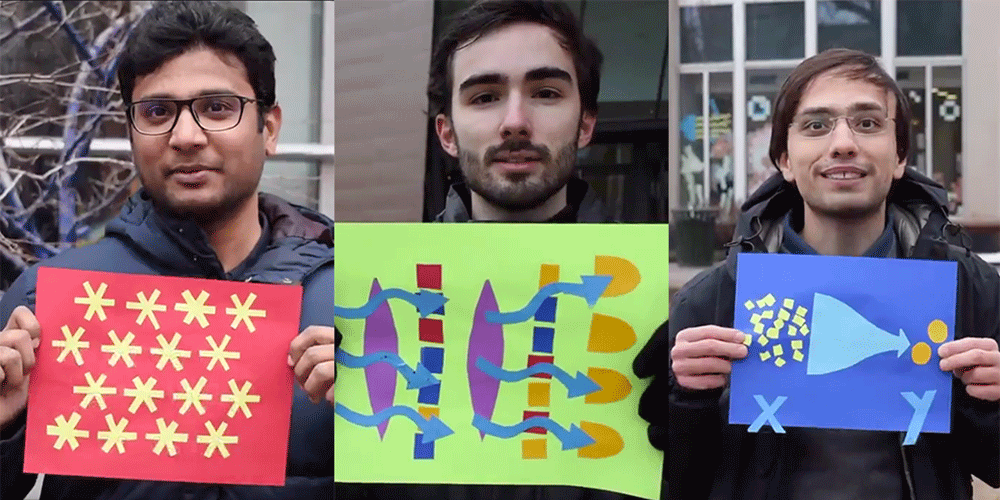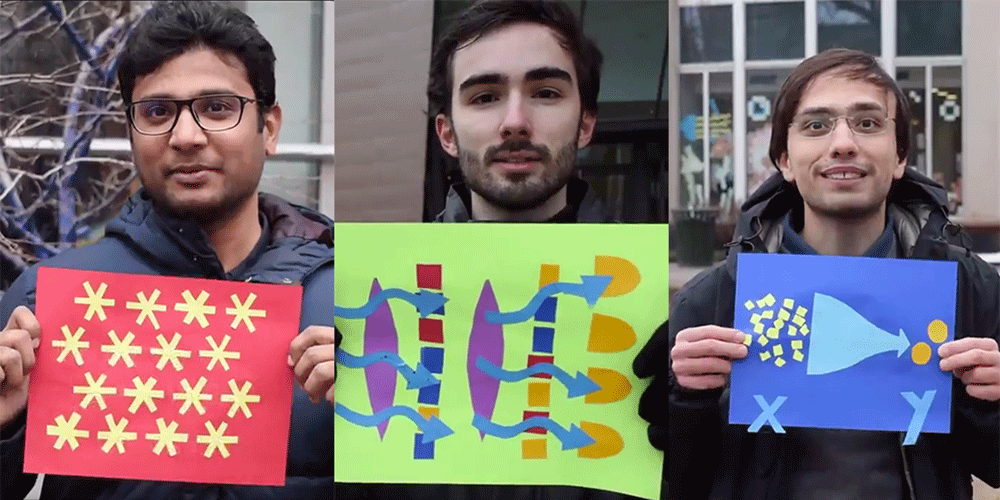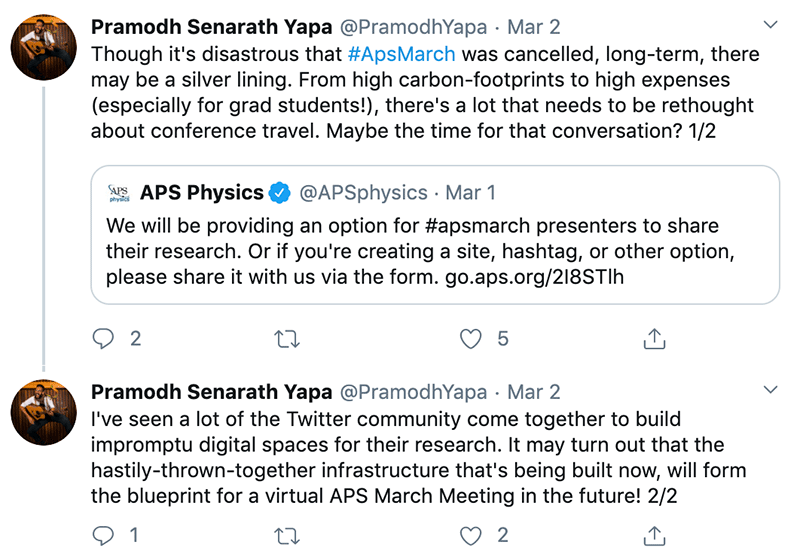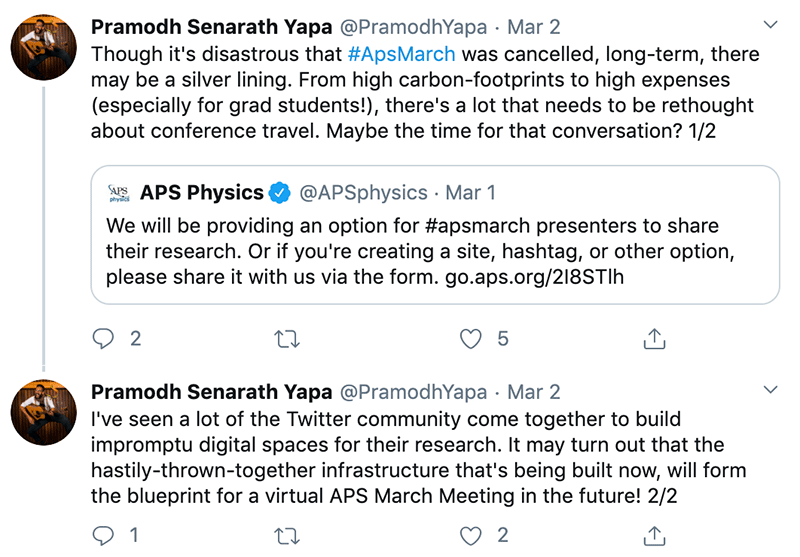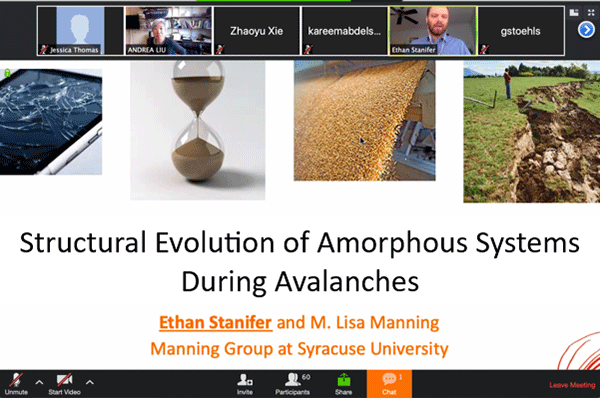Canceled Meeting Makes a Virtual Rebound
When the American Physical Society (APS) canceled its annual March Meeting last week because of concerns about the new coronavirus disease (COVID-19), social media predictably lit up. Would-be attendees expressed a mixture of shock, understanding, and—since some had already traveled thousands of miles for naught—fury. The meeting, which was due to start the next day in Denver, Colorado, routinely attracts more than 10,000 attendees and is a fixture on many physicists’ calendars. Not having it just felt…wrong.
Quickly, however, a few enterprising researchers decided the show must go on. Adam Fortais, a graduate student at McMaster University, Canada, tweeted to fellow soft-matter physicists, “I still want to see your talks,” and he offered to help them connect by providing a tutorial for recording and uploading presentations. Karen Daniels of North Carolina State University set up a Google doc (see view-only version) where speakers could form mini sessions. The rest, she says, was a bottom-up, grassroots movement. “We’re soft-matter physicists,” she says. “We’re comfortable with self-organization.”
Similar efforts were organized for other fields, such as biophysics. In parallel, Michael Biercuk, of the University of Sydney in Australia and the quantum technology company Q-CTRL, marshalled forces to develop a Virtual APS March Meeting website, which has about 60 presentations as of today. (A typical March Meeting has about 10,000 contributed talks.) Other researchers simply uploaded their talks to Youtube and then tweeted out a link with the hashtag #MarchMeeting2020. Taking the minimalist approach, several graduate students and postdocs used hand-held posters in the style of Matisse cutouts to explain what they might have presented.
Many, like graduate student Pramodh Senarath Yapa of the University Alberta, Canada, saw these efforts as a “silver lining” of the canceled conference. “It may turn out that the hastily-thrown-together infrastructure…will form the blueprint for a virtual APS March Meeting in the future,” he tweeted.
Scientists have recently advocated for more virtual conferencing, as the change could lower their carbon footprint (see Opinion: Time to Act Like its a Climate Emergency). And when talks are available online, more people can see them—be it a new parent stuck at home or a graduate student unable to afford the trip. Even an attendee at the March Meeting is sure to miss some interesting talks because so many sessions overlap.
Still, the traditional in-person meeting is an ingrained habit. And it has so many intangible social benefits that there has been reluctance to experiment with virtual conferencing on a large scale. “People aren’t used to it,” says Andrea Liu, a soft-matter physicist at the University of Pennsylvania. She’s pushed for more virtual meetings in her role as the Speaker of the APS Council—a group of scientists representing various physics subfields. Liu says that people often think of the nuisances of virtual meetings—the wasted time and frustration from finicky technology or the tendency of audience members to zone out. But she thinks these issues can be overcome with time. “Let’s not view these as killers,” she says.
Liu chaired one of the virtual sessions from the soft-matter group via Zoom. For me—as one of the roughly 50 attendees—the session was just as good as the in-person version and, in some cases, better. The presentations were much easier to see because they were 18 inches away. A seat was guaranteed. And there were no distractions from people trickling in and out of the room. Attendees asked questions, and Liu even offered some clapping on everyone’s behalf.
“This virtual conference has been a great experience,” says Ethan Stanifer from Syracuse University, New York, who gave a short talk in the session that Liu chaired. “I felt I had everyone’s attention without feeling all their eyes on me.” He says the format also made it easier to concentrate on other people’s talks as he wasn’t distracted by hundreds of other sessions going on at the same time in the same building. “If we have another virtual conference, I will definitely be excited to join in again.”
APS is supporting many of the grassroots efforts to go virtual, promoting some of the online sessions on a webpage and inviting presenters to submit their talks or posters. Long-term, the society hopes to have a repository for all of the talks, but when and what form that will take is still unclear, says APS’s Chief Information Officer, Mark Doyle. If meetings do eventually go more virtual, he explains, the organization of the talks will likely need to be rethought. “I think there’s a lot to learn, and we’ll be building upon this entire experience,” Doyle says.
Of course, some of the best parts of the March Meetings are what happens between the talks—the random encounters with old friends or the sharing of new ideas. “The hallways are the most active place,” Daniels says. For now, virtual meetings can’t replicate that social aspect.
Brad Marston, a physicist at Brown University, Rhode Island, who has taken steps to reduce his carbon footprint by traveling less, doesn’t think virtual meetings would fully replace in-person meetings. But much as the preprint archive complements journals—allowing results to be shared more immediately and widely—he says virtual conferencing could provide researchers a much-needed alternative to flying while still letting them stay in the information loop. And instead of trying to mirror conferences in virtual form, he sees an opportunity to entirely rethink the experience. “If we’re creative, we might ultimately come up with something better.”
–Jessica Thomas
Jessica Thomas is the Editor of Physics.
Erika K. Carlson contributed to the reporting of this story



